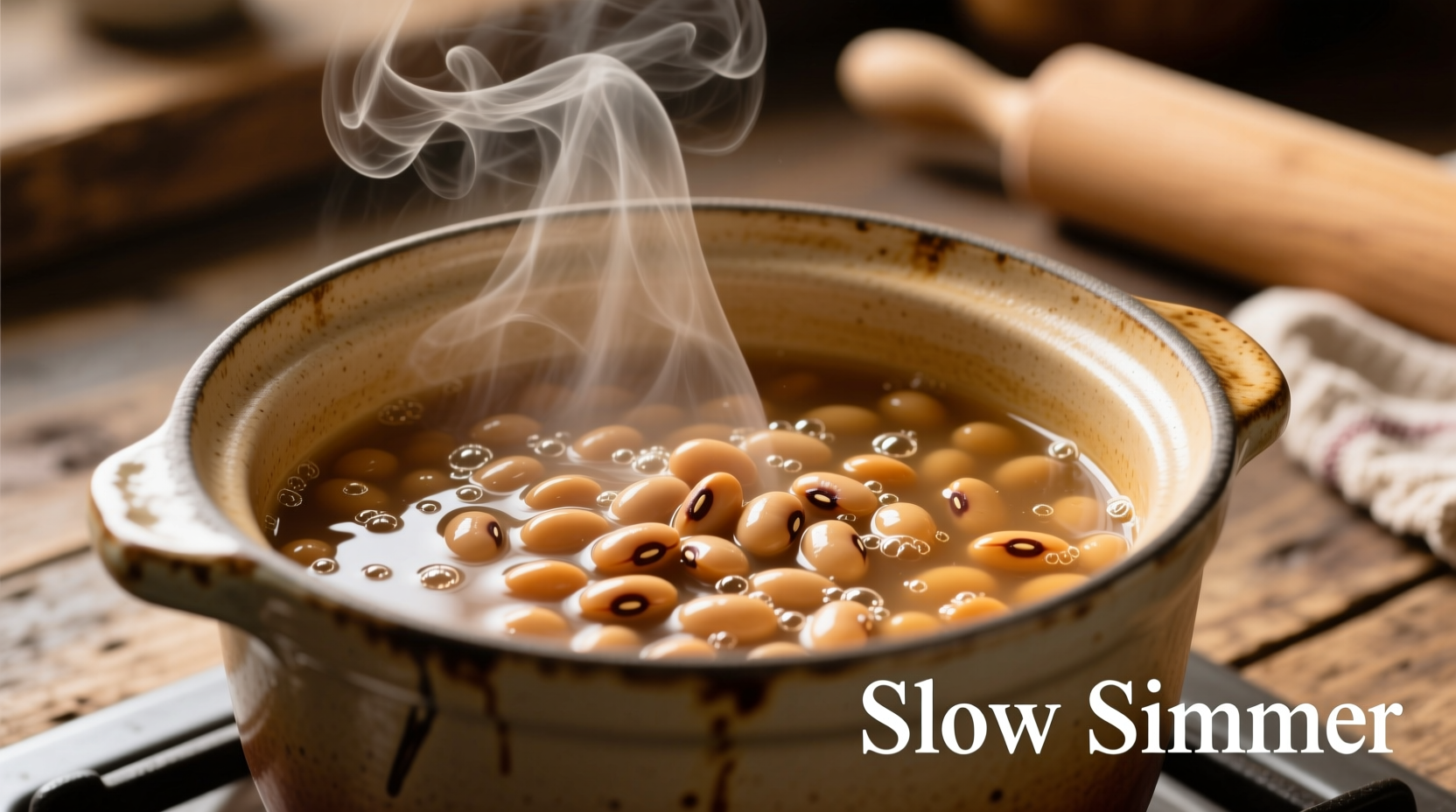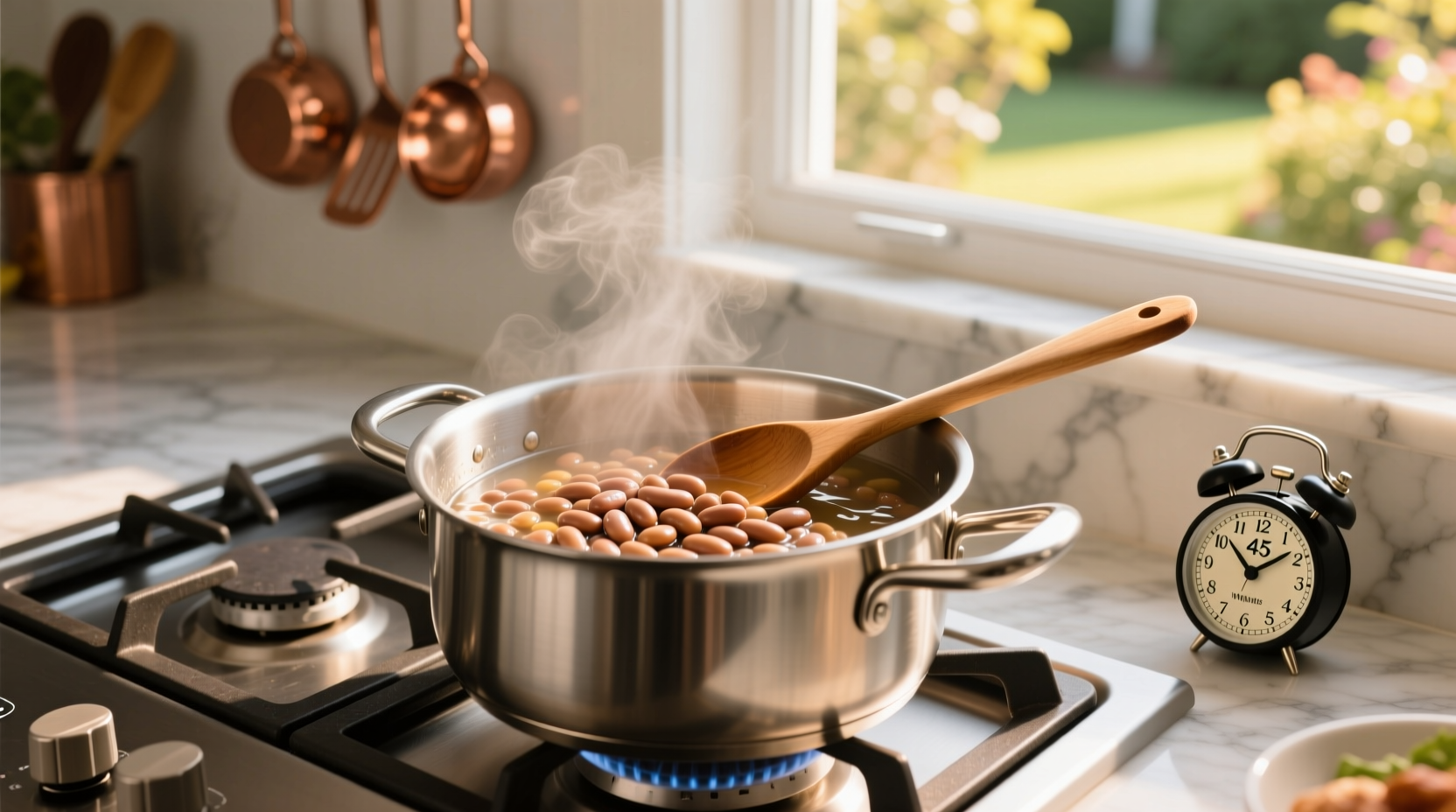Your Complete Guide to Perfectly Cooked Pinto Beans
Nothing beats the creamy texture and earthy flavor of properly cooked pinto beans in chili, refried beans, or as a side dish. But getting that perfect tenderness without ending up with mushy or undercooked beans can be tricky. Let's break down exactly how long pinto beans take to cook using various methods, plus essential tips you need for consistent results every time.
Quick Reference Cooking Times
| Cooking Method | Soaked Beans | Unsoaked Beans | Key Notes |
|---|---|---|---|
| Stovetop | 1-2 hours | 2-3 hours | Simmer gently after initial boil |
| Instant Pot/Pressure Cooker | 25-35 minutes | 35-45 minutes | Natural release for 15 minutes |
| Slow Cooker | 6-8 hours | 8-10 hours | Low setting recommended |
| Oven | 2-2.5 hours | 3-3.5 hours | 350°F (175°C), covered |
Why Cooking Times Vary: Critical Factors
Understanding these variables helps you adjust cooking times for perfect results:
- Bean age: Older beans (over 1 year) can take up to 50% longer to cook. The USDA recommends using dried beans within 1-2 years for optimal cooking performance
- Water hardness: Hard water with high mineral content can significantly increase cooking time. Consider using filtered water if your tap water is hard
- Altitude: At elevations above 3,000 feet, increase cooking time by 25% as water boils at lower temperatures
- Acidic ingredients: Adding tomatoes, vinegar, or wine before beans are fully cooked can double cooking time. Wait until beans are tender before adding acidic components

Step-by-Step Cooking Methods
Traditional Stovetop Method (Best Flavor Development)
- Sort and rinse: Remove debris and damaged beans, then rinse thoroughly
- Soak (optional but recommended): Cover with 3 inches of cold water and soak 8-12 hours, or use quick-soak method (boil 2 minutes, then soak 1 hour off heat)
- Cook: Drain soaked beans, cover with fresh water (3 cups water per 1 cup beans), bring to boil, then reduce to gentle simmer
- Season: After 45 minutes of cooking, add salt (1.5 tsp per pound of beans) and aromatics
- Finish: Cook until tender (1-2 hours for soaked beans), checking every 15 minutes after the 1-hour mark
Instant Pot/Pressure Cooker Method (Fastest Option)
- Follow sorting and rinsing steps as above
- Add 1 cup dried beans and 2.5 cups water to pot (no soaking required)
- Seal and cook on high pressure: 25 minutes for soaked beans, 35 minutes for unsoaked
- Allow 15 minutes of natural pressure release before quick releasing remaining pressure
- Add salt and seasonings after cooking completes
How to Test for Perfect Doneness
Don't rely solely on timing—proper testing ensures perfect texture:
- Squeeze test: Remove 3-4 beans, let cool slightly, then gently squeeze between fingers. Perfectly cooked beans should yield easily but maintain shape
- Bite test: Taste a cooled bean—it should be creamy throughout with no hard center
- Consistency check: Beans should be uniformly tender, not mushy on outside with firm centers
According to food safety guidelines from the National Center for Home Food Preservation, undercooked beans contain phytohaemagglutinin, a lectin that can cause food poisoning. Always ensure beans reach an internal temperature of 212°F (100°C) and maintain that temperature for at least 10 minutes to neutralize harmful compounds.
Troubleshooting Common Issues
Beans Still Hard After Expected Time
- Check water level—beans must stay submerged
- Add 1/4 teaspoon baking soda to cooking water (use sparingly as it can affect flavor)
- Consider your water hardness—try filtered water for next batch
- Older beans may simply need more time—continue cooking with additional water as needed
Beans Becoming Mushy
- Reduce cooking temperature—vigorous boiling breaks down beans too quickly
- Avoid adding salt too early in cooking process
- Don't stir beans vigorously during cooking
- Remove from heat as soon as beans reach desired tenderness
Storage and Reheating Tips
Properly stored cooked pinto beans maintain quality for future meals:
- Refrigeration: Store in cooking liquid in airtight container for up to 5 days
- Freezing: Portion into 1.5 cup servings (standard recipe amount) with cooking liquid, freeze for up to 6 months
- Reheating: Gently warm on stovetop with a splash of water or broth to restore moisture
- Reviving frozen beans: Thaw overnight in refrigerator before reheating for best texture
University of Minnesota Extension research shows that beans frozen with their cooking liquid retain significantly better texture and nutrient content compared to beans frozen dry. The liquid creates a protective barrier during freezing that prevents freezer burn and texture degradation.
Maximizing Flavor in Your Pinto Beans
While cooking time gets your beans tender, these techniques elevate flavor:
- Add aromatics during last 30 minutes of cooking: onion, garlic, bay leaves
- Finish with a splash of apple cider vinegar or lime juice to brighten flavors
- For authentic Latin American flavor, include epazote (a traditional bean-cooking herb that also reduces gas)
- Save 1 cup of cooking liquid to use as flavorful broth in soups and stews











 浙公网安备
33010002000092号
浙公网安备
33010002000092号 浙B2-20120091-4
浙B2-20120091-4